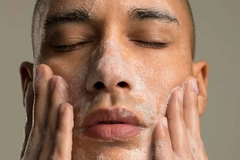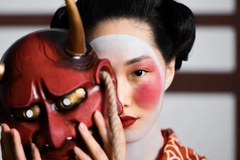L’Oréal deepens China push with second C-beauty stake
Key takeaways
- L’Oréal has taken a minority stake in Lan, marking its second investment in a Chinese skin care brand in the past month.
- The deal comes as global beauty companies face increasing pressure in China from fast-growing C-beauty competitors amid the country’s economic slowdown.
- The Lan and Chando stakes strengthen L’Oréal’s position in China’s mid-market segment.
L’Oréal has taken a minority stake in the Chinese mass-market skin care brand Lan, marking the beauty giant’s second investment in a Chinese beauty company in recent weeks. The move underscores L’Oréal’s heightened focus on China as international brands are losing ground to fast-growing domestic players.
“We firmly believe investing in China is investing in the future, and we will continue to cultivate the Chinese market, work with more Chinese brands to create a beautiful future, and meet the expectations of sophisticated Chinese consumers,” says Vincent Boinay, president of L’Oréal North Asia and CEO of L’Oréal China.
The deal follows L’Oréal’s 442 million yuan (US$62 million) purchase of a 6.67% stake in another C-beauty skin care brand, Chando, last month.
According to Yang Hu at Euromonitor International, Chando’s mid-range pricing and presence in smaller cities support L’Oréal’s long-term recovery in China by boosting L’Oréal’s growth without competing directly with its premium labels.
A similar dynamic could benefit L’Oréal’s stake in Lan, which also competes in the mid-market and appeals to consumers outside major urban cities.
The recent investments come as L’Oréal CEO Nicolas Hieronimus reported the company’s first quarterly increase in China in two years. The company saw third-quarter growth of around 3%, suggesting that the group’s recalibrated China strategy may be beginning to stabilize performance.
LÓréal has not disclosed the size or cost of the new Lan stake.
Clean C-beauty
Lan is a Shanghai-based skin care brand founded in 2019. The brand develops products using a mix of biotech methods such as “molecular oil extraction” and traditional Chinese formulations. It reached around ¥200 million (US$28.1 million) in revenue by 2020, according to the company.
Lan was China’s top-selling facial oil brand in 2023 and 2024.
Both Lan and Chando promote themselves using “natural” ingredients and position themselves in the clean beauty category, aligning with the demands of Chinese consumers. The stakes could give L’Oréal insights into ingredient concepts that resonate locally.
.webp) L’Oréal returned to growth in China last quarter for the first time in two years.L’Oréal’s earlier stake in Chando was disclosed in the company’s Hong Kong IPO prospectus. The deal shows L’Oréal’s interest in the mid-market, natural-ingredient segment.
L’Oréal returned to growth in China last quarter for the first time in two years.L’Oréal’s earlier stake in Chando was disclosed in the company’s Hong Kong IPO prospectus. The deal shows L’Oréal’s interest in the mid-market, natural-ingredient segment.
According to consultancy firm Frost & Sullivan, Chando is the third-largest home-grown beauty player in China, based on retail sales. Chando trails behind Proya and Chicmas, indicating the scale and reach of the brands L’Oréal is choosing to partner with.
Economic dip fuels domestics
China’s beauty market is valued at approximately US$75 billion, but many multinational beauty companies are struggling to keep pace in China. L’Oréal previously called China’s domestic retail environment “challenging,” while Estée Lauder, Kao, Coty, and Amorepacific also reported weaker demand. Several brands have stated that stronger local competition is a major reason for their loss of market share.
Industry analysts note that China’s economic slowdown, property market crisis, and concerns over job stability have helped accelerate C-beauty’s rise. These aspects are prompting consumers to favor accessible, value-driven brands with a strong local presence and clear ingredient positioning.
Analysts also say domestic brands release new products more quickly and promote novel skin care ingredients and routines more aggressively, which adds pressure to global beauty players.
The French beauty giant’s investment in Lan represents a pivot toward partnership rather than competition. The move enables L’Oréal to attach itself to popular local names that already resonate with Chinese consumers.
Analysts say this approach also serves as a hedge against the potential decline of global labels in China. L’Oréal can therefore leverage local brand equity, consumer trust, and distribution channels that domestic brands have built in lower-tier cities and online ecosystems.














